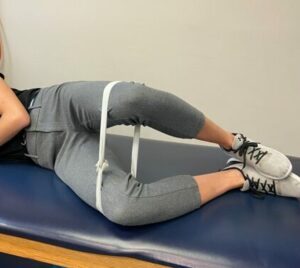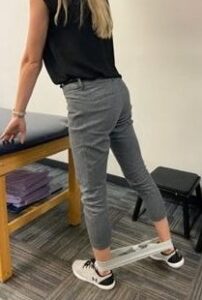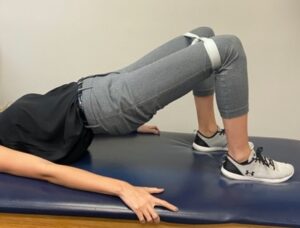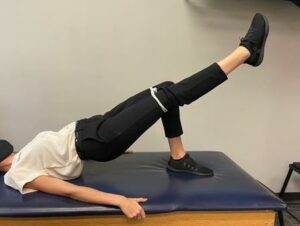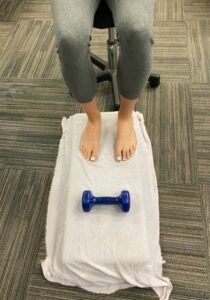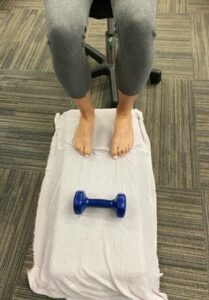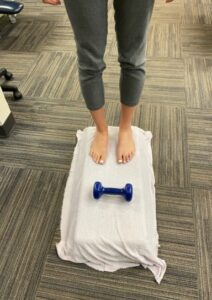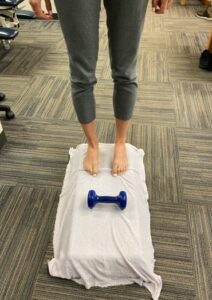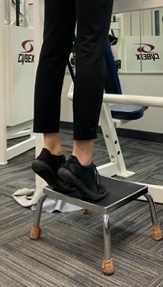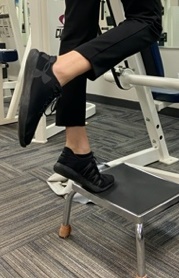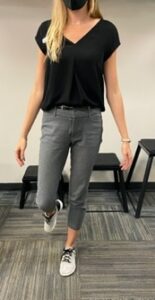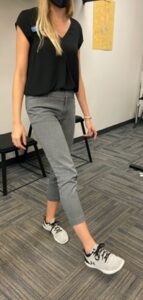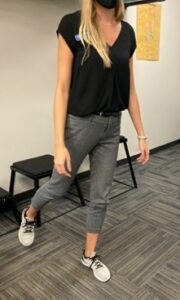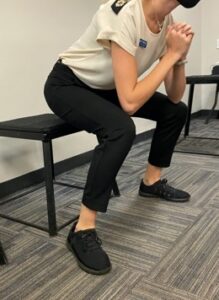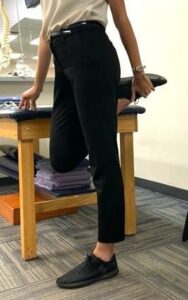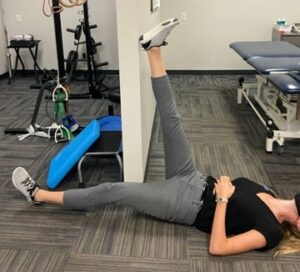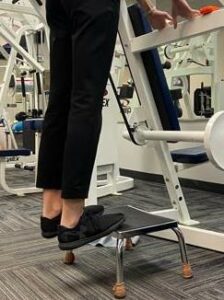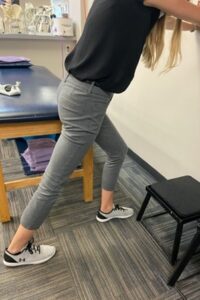The Runner’s Ten – 10 Exercises for Runners
The Runner’s Ten – 10 Exercises for Runners
Are you a runner? Have you ever felt a pain or discomfort during or after a run that bothered you just a little too much? More than just your average muscle soreness. You rest it a couple days and it feels better so you try running again. And it hurts again. And then unfortunately it keeps getting worse. Does this sound familiar? For many runners, I’m sure it does. After all, up to 79.3% of runners get injured every year, and the majority of those injuries are overuse injuries – meaning they occur from repetitive stress placed on tissues over time (Van Gent et al., 2007).
But there is hope. We can break this cycle. The Runner’s 10 is a list of ten exercises that can reduce the risk of injury and help keep runners running. It includes exercises that strengthen and stretch many of the key muscles used while running, including the gluteus medius and maximus, quadriceps, hamstrings, and calf muscles. When any of these muscles lack strength or flexibility, other areas of the body compensate, which can lead to injury. Completing these exercises 1-2 times per day will reduce that injury risk and keep you running pain- and injury-free.
First thing’s first: before any run, you should always perform a dynamic warm up to prepare your body for running and reduce risk of injury. Dynamic warm ups increase blood flow to key muscles and improve joint range of motion. Here is link to a great example of a dynamic warm up that you can incorporate into your pre-run routine: https://youtu.be/8UTPZ2wJ0QM.
Exercise 1: Clamshells
Clamshells work the hip muscles on the side of your hips called the abductors. These muscles work to stabilize your pelvis and hips while running.
To perform clamshells, lay on your side with both knees bent and a resistance band around both thighs above your knees. Keeping your feet touching, lift your top knee until you feel good resistance from the band. Hold this position for 10 seconds. Repeat this 10 times. Then, flip onto your other side to strengthen the abductors on the other leg.
Exercise 2: Skaters
This exercise also strengthens the abductors, as well as your gluteus maximus muscle. These muscles work together to provide stability and power to your legs while you run.
To perform skaters, place a resistance band around your ankles. While standing (with a table, chair, or wall in front of you for balance), kick your leg backwards at a 45 degree angle while keeping your knee straight. Complete 20 reps, then switch sides.
Exercise 3: Bridge
Bridges also target the gluteus maximus. Specifically, this exercise works to improve the endurance of this muscle.
Lie face up on the floor, with your knees bent and feet flat on the ground. Keeping your arms at your side with your palms down, lift your hips off the ground. Hold this position for 10 seconds. Complete 10 reps.
For an extra challenge, kick one knee straight to perform single leg bridges. You could also add a resistance band around your thighs (above your knees) to make this exercise even more challenging.
Exercise 4: Towel Scrunches
The intrinsic foot muscles are important for balance and stability, and they also assist in creating forces that help you push off from the ground when running. Strengthening them is important to prevent running injuries – if they’re weak, other areas of your ankle and leg will compensate which could lead to an overuse injury.
To strengthen your foot muscles, begin by sitting in a chair with a moist towel on the floor under both feet. Curl your toes to scrunch the towel. Make sure that you do not lift your ankle/foot off the floor as you are curling the towel with your toes. Continue to do so until the towel roll is mostly curled up, and then straighten out the towel and start again. Do this for 3 minutes. To progress this exercise, do it while standing and/or add a weight to the top of the towel to make it more challenging to scrunch.
Exercise 5: Heel Raise
Heel raises strengthen your calf muscles called the gastrocnemius and soleus. These muscles work to help you get explosive push off from the ground when running. Strengthening them is simple, but there are many ways you can adapt this exercise.
To perform heel raises, you may either start by standing on the floor, or on a step/stair with your heels off the edge. Next, lift up onto your toes. Repeat this for 30 reps. Here is where you can get creative – to progress this exercise, you can either hold the heel raise position for 10 seconds for 10 reps, add resistance by holding weight/dumbbells in your hands, or progress to doing heel raises on one leg at a time.
Exercise 6: Single Leg Stance
While running, you spend ~ 40% of the time in single limb support – meaning only one foot is on the ground at a time. This means you must have good balance on each foot to remain stable while running and prevent abnormal forces from causing injuries.
To start this exercise, stand on one foot for as long as you can without losing your balance – a good goal is to maintain your balance for 30 seconds on each foot. Complete 3 reps on each foot. To make this exercise harder, you can stand on foam or a couch cushion to challenge your balance even more. When you feel confident with holding your balance on one foot, add some kicks! Start by kicking forward and backward 20 times. Then, kick side to side 20 times. This will challenge your balance and strengthen many of the stabilizers in your legs.
Exercise 7: Squats
Squats are a very well-rounded exercise because they target many of the biggest and most powerful muscles used while running in one simple exercise. They can also help improve knee stability, leg power, and body awareness.
Begin standing with a chair behind you with your feet shoulder width apart. Sit your bottom back while keeping most of your weight in your heels as you bend at your knees and hips. Try to not let your knees move beyond your toes by trying to keep your lower legs as vertical as possible. A good tip is to bring your elbows to your knees and try to get your thighs parallel to the floor. Hold this position for 10 seconds. Complete 10 reps.
Exercise 8: Quadriceps Stretch
There are many benefits of stretching – it improves flexibility, decreases muscle stiffness, increased joint range of motion, improves posture, and decreases risk of injuries (to name just a few). The following three stretches will not only minimize your injury risk, but also leave your muscles feeling really, really good. The first is a quadriceps stretch.
To do this stretch, stand on one leg (holding on to a chair, table, or wall in front of you for balance). Grab your other foot and pull towards your bottom to feel a nice stretch in your quadricep muscles in the front of your thigh. Hold this position for 20-30 seconds before switching sides.
Exercise 9: Hamstring Stretch
Hamstrings (the muscles on your back of your thighs) have a tendency to be notoriously tight in most individuals. One of the best ways to stretch your hamstrings is while laying down in a doorway.
Begin by lying on your back inside of a doorway with the leg to be stretched closest to the door frame. Lift the leg and place it upon the wall with the knee straight. A stretch should be felt along the back of the thigh and to the knee. Scoot farther through the door for a more intense stretch, and farther away from the door for a lighter stretch. Hold the stretch for 20-30 seconds before switching sides.
Exercise 10: Calf Stretch
If you’ve been following along with each of the exercises above, it is likely that your calves are feeling the burn after doing the heel raises. Stretching them will make them feel much better.
To stretch your calves, stand on a step with your heels off the edge (holding onto wall or rail for balance). Keeping your knees straight, slowly shift your weight onto your heels until you feel a stretch in your calf. Hold for 20-30 seconds.
You can also stretch the calf by standing with the leg you wish to stretch behind the other. While holding onto a stable surface, gently lean forward and bend your front knee. Make sure to keep your back knee straight and heel firmly planted on the ground. Continue until you feel a stretch in your calf. Hold this stretched position for 20-30 seconds. Then switch sides.
Well, there you have it – the Runner’s 10. Doing these 10 exercises 1-2 times per day will help decrease your injury risk and keep you running faster, longer, and stronger. However, if you do have an injury that has been preventing you from running at your best, you can always make an appointment with your favorite physical therapists at Sports Rehab Center of Atlanta who will be happy to help get you back to running.
References
Van Gent, R. N., Siem, D., van Middelkoop, M., Van Os, A. G., Bierma-Zeinstra, S. M. A., & Koes, B. W.
(2007). Incidence and determinants of lower extremity running injuries in long distance runners: a systematic review. British journal of sports medicine, 41(8), 469-480.
